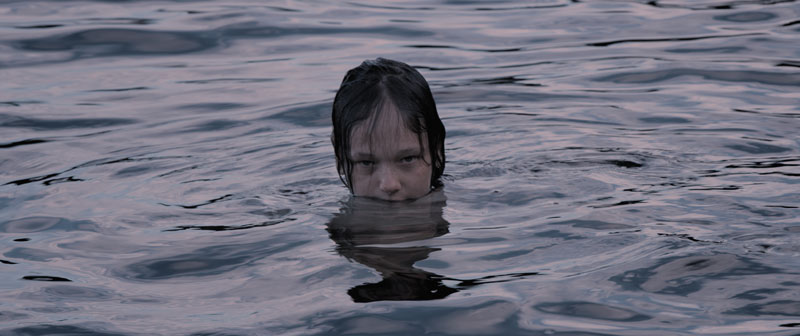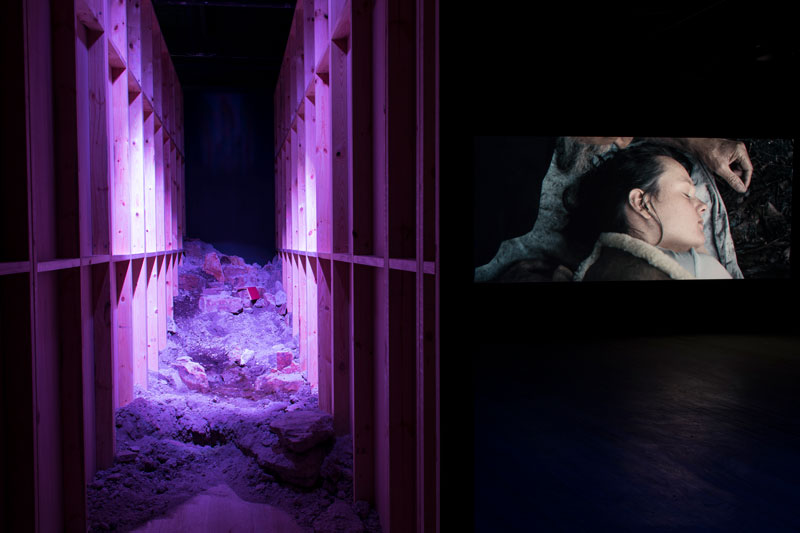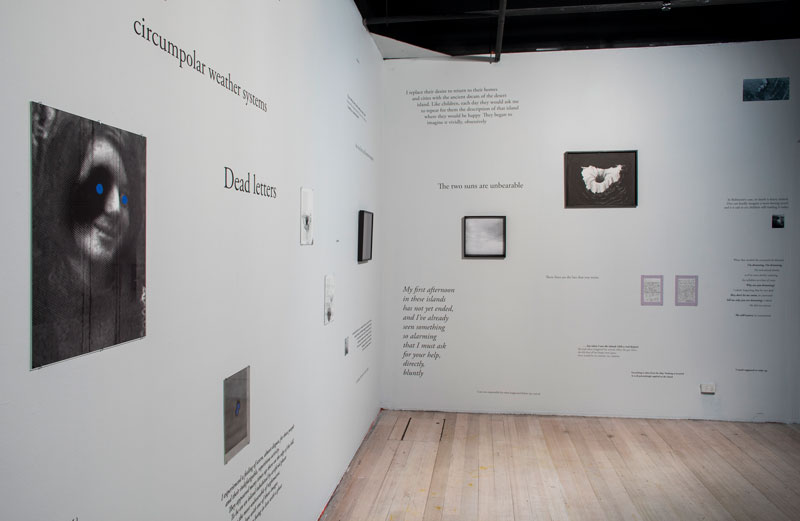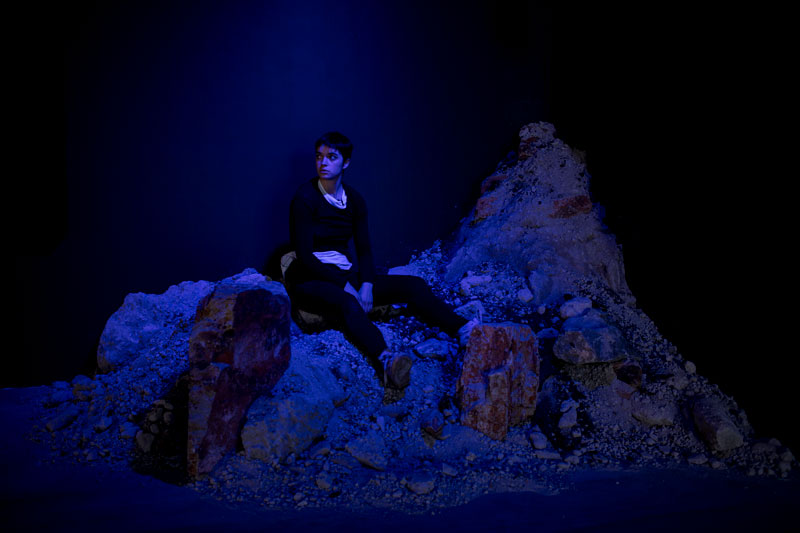
In 1971, 17-year-old Jane Cooper “fled” from her home in the suburb of Canterbury in Melbourne – according to the press reports, she was “weary of the assurance of war, racism, poverty and greed”[1] – to the remote and uninhabited De Witt Island off Tasmania’s south coast. An island off an island off an island continent, only Antarctica is further south. At the time this act of self-imposed isolation aroused great media interest and speculation about the motives of this young woman and what she might be doing there.
As someone who followed this story closely at the time it was clear from the contemporary reportage like the above, that reasons were being sought. But were these the true reasons? “She won’t come off, I’m afraid she will have to be moved,” said the Tasmanian Minister for Lands. “She could be in extreme danger if there is an emergency.”[2] No doubt, the tone of indignation and even outrage (not to mention the persistent and unsubstantiated gossip in the public arena), was motivated by the offence and frustration surrounding this withdrawal and refusal to participate in society.

What does it mean to truly cut oneself off from the world, at least the urban, social world, and seek total isolation from the connections with others, as well as the lifestyle and values one has grown up with? What form would such a self-imposed exile take? What circumstances might motivate one to take such a step? And where might one go to achieve such isolation? In Delay James Newitt presents us with many facets of this always compelling range of questions surrounding the persistent philosophical and psychological minefields around ideas of the Self. Themes of identity, escape, withdrawal and questioning the rational have inflected James Newitt’s work for some years now. To Attempt to Become Other, Secretly or Not (2016), is influenced by Bataille’s figure of the Acéphale, representing the possibility of escape from rational thought, and in I Want to See You Become Someone Else (2008–09) questions how personal histories (identities) become overlapped, conflated and confused.
The significance of islands, both actual and metaphorical, perhaps unsurprisingly for a Tasmanian artist, forms a parallel fascination for Newitt. My Secession Party (2011) involved the artist constructing a false island in the middle of Montrose Bay, Tasmania, where he formally undertook a four-week isolation (secession) on the new “Island”, living entirely independently. This gesture raised questions about identity and community and hinted at the later engagement with such issues which are explored with great depth and rigour in Delay. The story of Jane Cooper and De Witt Island presents an ideal trigger to the accumulation of many of these threads which have been examined by Newitt in discrete works of art over some years. In that sense, this major installation could be seen as something of an apotheosis. The sweep, depth and scale of the installation certainly supports this.

The installation of Delay consists of three discrete spaces. The first large space is white and coldly lit and presents the viewer with a variety of images and texts, presented in varying fonts and formats. Interspersed with black and white low-resolution newspaper images (some of Jane), are facsimiles of letters and drawings. The contents of these mostly quite brief texts refer to states of mind, experiences and observations, ranging from internal reflections to descriptions sourced as geographical discovery in remote places. Their power and poetic weight are significant, contributing to the elegant and engaging aesthetic experience of the wall as a composite of words and imagery.
Despite the fact they derive from a variety of sources, and clearly from different periods the texts all arrive in the mind with a similar force and suggestibility due to their brevity and relevance. The anonymity and equivocation of the various texts open out their potential and their capacity to inter-relate. These texts express aspects of the complex whole of the project but never close down to specific explanation or explication, instead providing a form of aesthetic and emotional trigger through states of mind, exotic encounters and shards of personal histories. Some texts refer directly to the many elements of the original narrative of Jane and the island. Amongst the most fascinating are copies of letters written to Jane and delivered by the fishing boats which supplied her provisions. These missives arrived from all over the world, sent by lonely men and damaged people, many concerned for her wellbeing, most of them claiming to “know” and to understand her.

In my first encounter of this space and installation I had proceeded through much of the material before realising that it referred to Jane Cooper but then her presence seared through, not as the central narrative, merely as the progenitor and partial archetype. I am aware that this is not about Jane, she is merely a touchstone but since she was actual it does add a compelling force to the concepts articulated without becoming too literal or prosaic. This is a balancing act that Newitt navigates with great skill in the film as well. One cannot escape the irony that the fact of withdrawal from the world should shine the hard spotlight on this young woman. A further fascination is that identities were being imagined, suggested and created for her, as if the void she has created was to be filled by a new public persona based on pure speculation. Does this then become a structural component of the installation? Certainly, the work is full of paradox and innuendo.
The second major component of this installation is a 62-minute immersive film, I Go Further Under (the double entendre of this title is acknowledged). This is presented in a larger and totally dark space, the opposite of the light-filled entry point. Between these two larger spaces is a narrow, walled slot in which a large pile of stones and concreted clay are arranged. The walls are raw and unpanelled, unlike the well-finished “public face” of those same walls as they appear in the other two spaces. A similar large pile of large stones and hard earth nestles in the rear corner of the projection space. Such mounds and accretions seem to suggest a hard landing, affirming that De Witt Island was no tropical paradise; rather, it is a cold, windy and desolate place where a human must struggle merely to survive. The inclusion of the rocks in the projection space was perhaps unnecessary but in all else there is nothing in Delay that could be stripped back or pared down without constituting a loss. Newitt has already carefully and cleverly removed all ornament, all repetition and all artifice through a rigorous and resolved editing process.

The film, like the whole installation, adroitly walks a line between providing a scenario and recording an experience without ever falling into a closed narrative or becoming in any sense a documentary. Newitt constantly opens the interpretation out, never closing it down. This is partly achieved by many brief insertions (pleas from potential suitors, digitised maps etc.) into the flow of the film and a virtual lack of dialogue. A narrator’s voice is interspersed at various points in the film and is the main vehicle (apart from some intercut texts) through which Jane’s voice selectively speaks. Even on the journey to the island most views are tight, the water rolling around the hull, the back of the fisherman represented through only a few brief shots at a wider angle and these serving merely to reinforce the sense of enclosure. Almost always the camera is in close-up, negotiating the central protagonist’s internal and external world. This sense of enclosure mirrors not only the fact that the island’s weather, vegetation and topography are harsh, confining and claustrophobic, restricting her movement, but also reflecting on her psychological state as everything closes in on her.
Newitt has allowed the external world to enter the island world, as it did for Jane Cooper through the agency of the fishermen who brought her supplies and mail. Appropriately Newitt places these contacts conditionally in this environment, never seeking to explain, for to do so would be merely dramatic or fictional documentary. The lack of dialogue is entirely congruent with this approach. It is vital that these situations and relationships remain somewhat unclear but also that they can be alluded to inasmuch as they add to the conceptual weight and integrity of the film, underscoring its quiet authority. The evocative soundscape provided for the film by sound artist Brendan Walls supports the visual aspect of the film.
Newitt consistently avoids any sense of drama; if any exists, it is somehow implicit in our connection with the unfolding situation. This is not a story, it is not a movie. There is no narrative, just something unfolding for us, placing us in a similar state of anxiety, confusion and uncertainty as the girl portrayed. I Go Further Under, and certain prior works by Newitt have their underpinnings in the writings of Georges Bataille, Gilles Deleuze, Herman Melville and in particular the novels of Adolfo Bioy Casares, most significantly A Plan for Escape (1975):
I replace their desire to return to their homes and cities with the ancient dream of the desert island. Like children, each day they would ask me to repeat for them the description of that island where they would be happy. They began to imagine it, vividly, obsessively.
While such desires, as articulated by Bioy Casares, usually centre around the vision of an ideal place where all cares might be obliterated and all needs met, this concept collapses as a mythic construct when confronted with reality. The ostensible inspiration for James Newitt’s all-embracing work, Jane Cooper, made a conscious decision to select a place, not only of real isolation but one which would be a hard place, a testing and challenging environment. Any plan for escape must incorporate the notion of refusal to participate.
In Jane Cooper’s case, this extended to her point that she wanted to be considered effectively “dead”. Did this presage a desire to be re-born, to discover her true identity on the island? That we can never really know. The narration within the film merely states that she wanted to be forgotten. But reality enforces itself on any dream and it becomes clear that Jane was never able to entirely disconnect from the world; rather, her case reinforced its revivifying concerns. The enigmas remain, not only those of the specific individual’s experience and state of mind but more broadly those overarching, transcendent enigmas. Newitt asks all the right questions and lays before us many shreds of evidence and snippets of experience but he is never presumptuous enough to begin to suggest anything beyond that. Within the hectic spectacle of Dark Mofo it was gratifying that this exhibition provided a reflective counterpoint, one which required diving deep, not merely skimming surface sensation.
Footnotes

